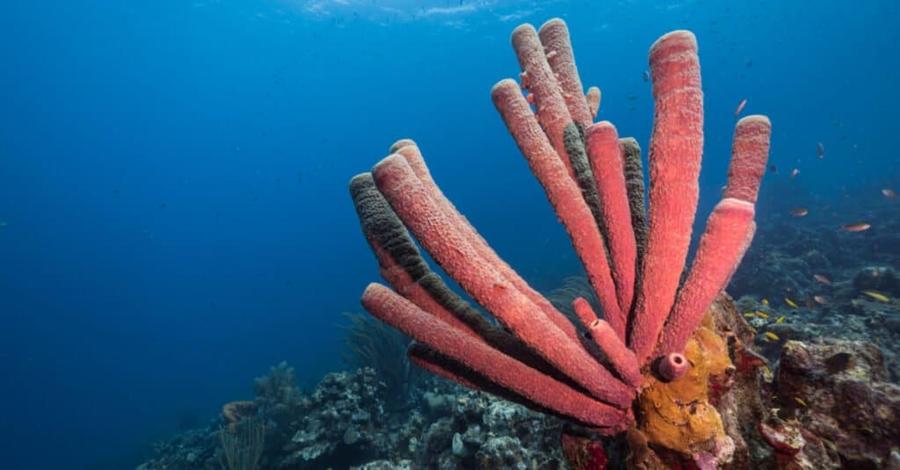Sponges, Creatures of the Sea

by Dilma Attidekou, age 8
When you hear the word sponge, you may think about cleaning or washing dishes. This cleaning tool was named after a real-life organism in the sea called a sponge. This creature has been used by humans for centuries! Sponges are usually mistaken for coral or plants, but they are actually animals that play a major role in their ecosystem.
The earliest known species of sponges were discovered roughly 600 million years ago. Today, there are over 8,000 different sponge species that belong to the phylum Porifera. This phylum contains four main classes: Demospongiae, Hexactinellida, Calcarea, and Homoscleromorepha.
Demsopnogiae makes up about 90 % of all sponges, meaning it is the most diverse by far. Hexactinellida is a rare glass sponge, Calcarea is made up of calcareous sponges and the homoscleromorpha is the simplest and rarest kind of sponge.
Sponges and coral have some similarities and are often mistaken for one another. Both these animals live underwater in coral reefs and do not have spines. However, the distinguishing factor between sponges and corals is the fact that sponges don’t have tissue and are very simple organisms. In comparison, corals have complex organs and cells. Corals can only live in saltwater, but sponges can live in both freshwater and deep saltwater.
Sponges play an important role in their ecosystems. In fact, their presence can help manage water quality as they filter and process chemical waste or bacteria. Water enters sponges through pores on their exterior. Structures called flagella inside the sponge filter bacteria out and collect food and nutrients. Over time, waste produced by sponges is excreted into the environment and used by other species. Specifically, in nutrient-poor environments, waste from sponges allows for the availability of carbon and allows other creates to feed, fueling productivity in an ecosystem.
Overall, sponges play a role in protecting the coral reef ecosystem and maintaining productivity. It is important to learn about these creates and understand the major role they play in coral reefs and other aquatic environments.
[Source: oceanservices.noaa.gov]



Loading Comments...